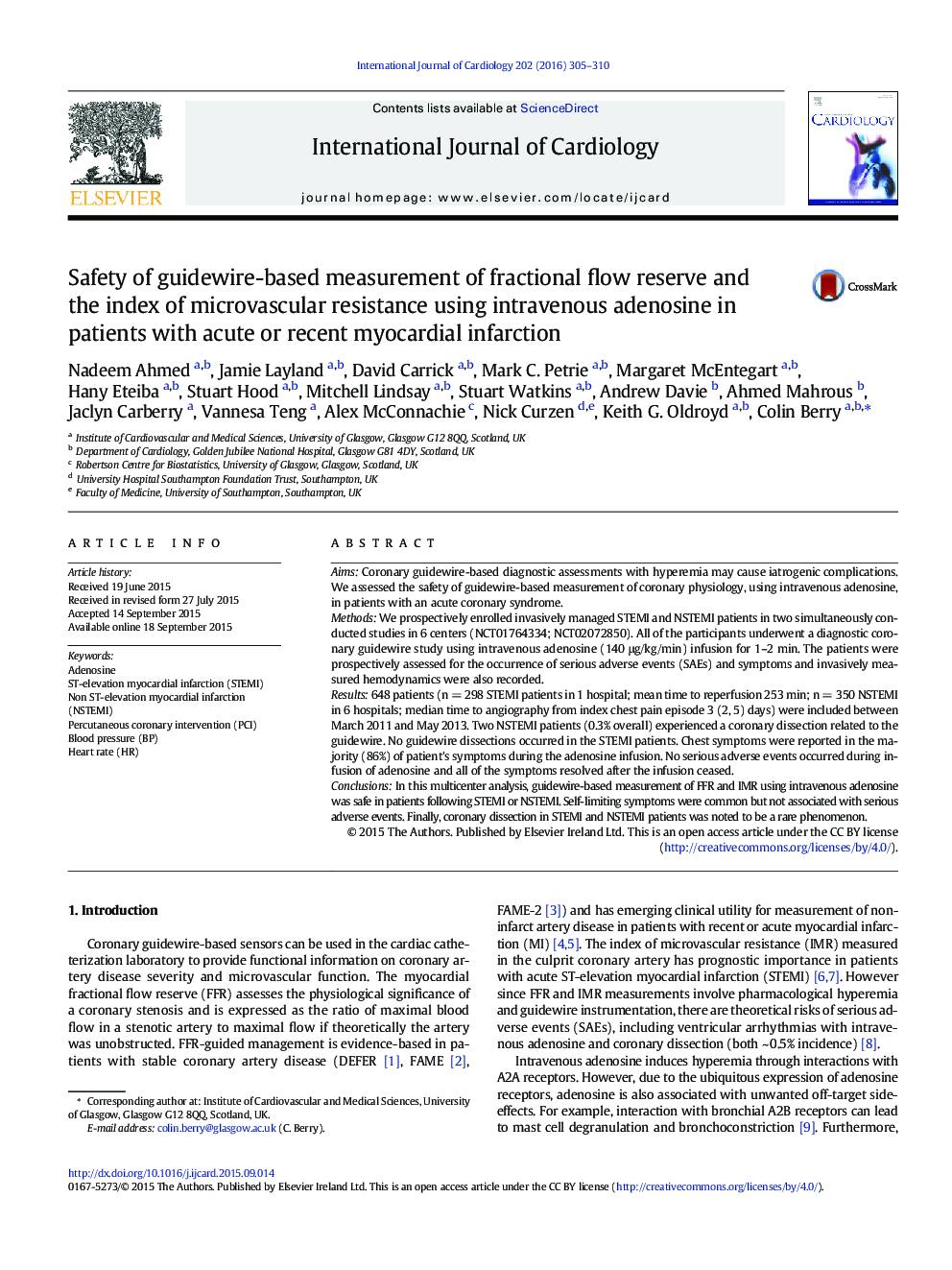| Article ID | Journal | Published Year | Pages | File Type |
|---|---|---|---|---|
| 5965367 | International Journal of Cardiology | 2016 | 6 Pages |
AimsCoronary guidewire-based diagnostic assessments with hyperemia may cause iatrogenic complications. We assessed the safety of guidewire-based measurement of coronary physiology, using intravenous adenosine, in patients with an acute coronary syndrome.MethodsWe prospectively enrolled invasively managed STEMI and NSTEMI patients in two simultaneously conducted studies in 6 centers (NCT01764334; NCT02072850). All of the participants underwent a diagnostic coronary guidewire study using intravenous adenosine (140 μg/kg/min) infusion for 1-2 min. The patients were prospectively assessed for the occurrence of serious adverse events (SAEs) and symptoms and invasively measured hemodynamics were also recorded.Results648 patients (n = 298 STEMI patients in 1 hospital; mean time to reperfusion 253 min; n = 350 NSTEMI in 6 hospitals; median time to angiography from index chest pain episode 3 (2, 5) days) were included between March 2011 and May 2013. Two NSTEMI patients (0.3% overall) experienced a coronary dissection related to the guidewire. No guidewire dissections occurred in the STEMI patients. Chest symptoms were reported in the majority (86%) of patient's symptoms during the adenosine infusion. No serious adverse events occurred during infusion of adenosine and all of the symptoms resolved after the infusion ceased.ConclusionsIn this multicenter analysis, guidewire-based measurement of FFR and IMR using intravenous adenosine was safe in patients following STEMI or NSTEMI. Self-limiting symptoms were common but not associated with serious adverse events. Finally, coronary dissection in STEMI and NSTEMI patients was noted to be a rare phenomenon.
